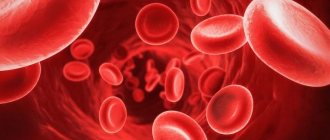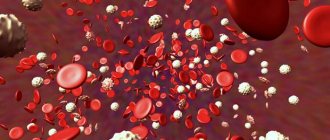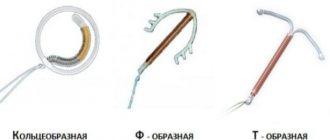Historical facts
Hemophilia is one of the historically known diseases; it is called the “royal disease”. In the history of Russia, the disease hemophilia began to appear in the Romanov dynasty. Britain's Queen Victoria carried the hemophilia gene and passed it on to four of her five children. Her son Leopold had hemophilia, and her three daughters Victoria, Alice and Beatrice became carriers of the gene. Alice gave birth to a girl - the future Russian Empress Alexandra Feodorovna Romanova, née Alice of Hesse-Darmstadt.
Alexandra Fedorovna had five children, 4 daughters had very weak immunity since childhood, all had measles, and often suffered from colds, which were complicated by otitis media and pneumonia.
But the only son of the royal family, the long-awaited Tsarevich Alexei, was much more seriously ill. Already at the age of two months he began to experience massive bleeding from the umbilical wound. Then bleeding and hemorrhages in the joints haunted the baby constantly.
They took great care of the only heir and invited the best doctors. Even “Elder Grigory Rasputin” took part in the treatment of the prince, to whom they turned in moments of despair. We do not know how long Alexey would have lived in peacetime, since his life was interrupted by two shots from the Bolsheviks on July 17, 1918.
How does hemophilia progress in the absence of specific treatment?
Soon after a child begins to crawl and walk, the inevitable falls and injuries of this age begin to be accompanied by severe hematomas and bruises. Falls on the limbs lead to injury to the joints and hemorrhages into their cavity. Such hemorrhages into the joint cavity are called hemarthrosis.
As a result of constant minor injuries in hemophilia, accompanied by severe bleeding, frequent hemarthrosis in the joints, inflammatory and destructive processes progress. If the course of hemarthrosis is unfavorable, inflammatory phenomena occur and chronic arthritis forms.
Long-term hemarthrosis leads to dysfunction of the joints, deformities, and in severe cases to partial ankylosis. Joints with hemophilia (if untreated) look swollen, deformed, enlarged, painful on palpation, and crunchy.
So, the main pathognomonic signs of hemophilia are multiple hemorrhagic phenomena that do not correspond to the strength of the impact. With the slightest blow or fall, the child develops extensive hemorrhages and bruises, and the size of the hemorrhagic phenomena can be very significant and involve the entire limb or a significant part of the body.
Bleeding in hemophilia can involve parts of the gastrointestinal tract, hemorrhages occur on the mucous membranes. Bleeding localized to the central nervous system is especially dangerous. Nose (gum) bleeding is also severe.
Bleeding after surgery or, for example, tooth extraction can be especially significant. Bleeding may not stop for a long time and lead to anemia.
https://youtu.be/Ua69rL5loVM
How does the disease occur?
Hemophilia genes are recessive. Recessive genes are conditionally “weak” genes, and in most cases of genetic diseases, clinical manifestations of hemophilia are possible only if both the child’s father and mother have these recessive genes in their genotype, and they are found in the child’s genotype.
But in the case of hemophilia, the situation is somewhat different. Hemophilia is an X-linked disease.
The gene that causes the development of hemophilia is attached to the X chromosome in both the mother and the father. The father has the sex chromosome genotype XY, the mother has the XX genotype.
Thus, hemophilia is inherited on the maternal line, since the boy receives the Y chromosome from his father, and the X chromosome from his mother. In a girl, the presence of one healthy X chromosome covers the defects of the second. The boy has a single X chromosome and there is nothing to “cover” it in case of a defect.
What is hemophilia?
Hemophilia is not one disease, but one of a group of inherited bleeding disorders that cause abnormal or excessive bleeding and poor blood clotting. The term is most often used to refer to two specific conditions known as hemophilia A and hemophilia B, which will be the main subjects of this article. Hemophilia A and B differ in a specific gene that mutates and encodes a defective clotting factor (protein) in each disease. Hemophilia C (factor XI deficiency) is rare, but its effect on clotting is much less pronounced than that of A or B.
Hemophilia A and B are inherited in an X-linked recessive genetic pattern and are therefore much more common in men. This type of inheritance means that a given gene on the X chromosome is expressed only when the normal gene is not present. For example, a boy has only one X chromosome, so the defective gene will be on his only X chromosome. Hemophilia is the most common X-linked genetic disorder.
Although much less common, a girl can also have hemophilia, but she must have a defective gene on both of her X chromosomes, or one hemophilia gene plus a lost or defective copy of the second X chromosome, which must carry normal genes. If a girl has one copy of the defective gene on one of her X chromosomes and a normal second X chromosome, she does not have hemophilia, but is said to be heterozygous for hemophilia (i.e., a carrier). Her male children have a 50% chance of inheriting one mutant X gene and thus have a 50% chance of inheriting hemophilia from a carrier mother.
Hemophilia A occurs in approximately 1 in every 5,000 live births of men. Hemophilia A and B occurs in all racial groups. Hemophilia A is about four times more common than B. B occurs in about 1 in 20-30,000 live births in males.
Hemophilia is called the royal disease because Queen Victoria, Queen of England from 1837 to 1901, was a carrier of the disease. Her daughters passed on the mutated gene to members of the royal families of Germany, Spain and Russia. Alexandra, the granddaughter of Queen Victoria who became the Russian Tsarina in the early 20th century when she married Tsar Nicholas II, was a bearer. Their son, Tsarevich Alexei, suffered from hemophilia.
Who is sick?
Boys (men)
If a boy inherits a defective X chromosome from his carrier mother, he will have hemophilia. The Y chromosome is in no way related to the hemophilia gene.
Girls
In the vast majority of cases, girls do not suffer from hemophilia, but may be carriers of a defective gene. A girl can only get sick in exceptional cases when her mother is a carrier of the gene and her father has hemophilia. In this case, the carrier mother gives a defective X chromosome, and the father gives a single (also defective) X chromosome.
Finding a cure
A group of geneticists managed to cure laboratory mice from hemophilia using gene therapy[1]. Scientists used adeno-associated viruses (AAV) for treatment.
The principle of treatment is to cut out the mutated DNA sequence using an enzyme carried by AAV, and then insert a healthy gene into this place with a second AAV virus. Coagulation factor IX is encoded by the F9 gene. If the F9 sequence is corrected, the clotting factor will begin to be produced in the liver, like in a healthy individual.
After gene therapy in mice, the level of the factor in the blood increased to normal. After 8 months, no side effects were identified.
Treatment is carried out during bleeding:
- hemophilia A - fresh plasma transfusion, anti-hemophilia plasma, cryoprecipitate;
- hemophilia B - fresh frozen donor plasma, coagulation factor concentrate;
- hemophilia C - fresh frozen dry plasma.
Next, symptomatic treatment is carried out.
Classification
Classification by type
- hemophilia type A - defect of blood coagulation factor VIII (antihemophilic globulin in combination with von Willebrand factor).
- hemophilia type B - defect of coagulation factor IX (Christmas factor)
- combined form - defects of factors VIII and IX (rare).
This classification is extremely important for the selection of therapeutic drugs.
Classification by severity of condition
The severity of the disease depends on the degree of damage to the coagulation system. In all children it can be detected to varying degrees. This depends on the severity of the genetic defect in the gene.
- latent (hidden, erased) - according to various sources, from 15 to 50%
- mild degree - about 5-15%;
- moderate severity - about 1-5%;
- severe - less than 1%.
There is no clinical classification of hemophilia, since the clinical picture is the same and differs only in the intensity of manifestations.
Possible complications
If there is no appropriate treatment, the disease causes permanent disability, in most cases the disease leads to death. Nowadays, with timely and adequate treatment, life functions in the same way as in healthy children.
If there is no therapy
- numerous joint lesions and a decrease in muscle mass, which leads to a sudden deterioration in movement;
- joint deformation;
- long-term hospital stays, which negatively affects the level of education;
- the need to use crutches, canes, and wheelchairs to move around;
- possible difficulties with finding a job in the future;
- problems in family life.
Complications of hemophilia
- pain that is constant;
- anemia caused by hemorrhagic syndrome;
- hemophilic arthropathy of a chronic nature;
- hemorrhages in vital organs;
- fractures;
- infection by vector-borne agents;
- contractures;
- pseudotumors appear in soft tissues or bones;
- inhibitory form.
Clinical manifestations (signs) of hemophilia
Clinical hemophilia is the formation of hemorrhages in various organs and tissues. The type of bleeding is hematoma, which means that the hemorrhages are large, painful and delayed.
Hemorrhage can form 1-4 hours after traumatic exposure. The blood vessels (spasm) and platelets (blood clotting cells) react first.
Both blood vessels and blood cells do not suffer in hemophilia, their function is not impaired, so initially the bleeding stops.
But then, when the turn comes for the formation of a dense blood clot and the final stop of bleeding, the defective plasma link of the blood coagulation system enters the process (plasma contains defective coagulation factors) and bleeding resumes.
This is how all the following pathological conditions inherent in hemophilia are formed.
What signs might a newborn baby have?
In newborns, the manifestations of hemophilia can be masked if the child is breastfed, since he receives clotting factors from the mother through breast milk. It often happens that the disease manifests itself during a period of non-breastfeeding for more than 1 month. With artificial feeding, symptoms appear earlier and more intense.
Characteristic signs of a blood clotting disorder in a newborn baby are:
- cephalohematoma of significant size (accumulation of blood in the space between the bones of the skull and the scalp) during spontaneous childbirth in the cephalic presentation,
- hematomas on the buttocks during spontaneous childbirth in the breech position,
- late bleeding from the remnant of the umbilical cord.
To clarify the diagnosis, tests should be taken (see below).
Hemorrhagic exanthema
Hemorrhagic exanthema is a rash of varying size and severity that appears on the skin spontaneously or under mechanical influence. Often, the impact is minimal, for example, measuring blood pressure or traces of rubber bands on clothing and underwear.
Depending on the severity of the disease, the rash can go away on its own if you follow a gentle regimen and avoid trauma, or it can spread and turn into soft tissue hematomas.
Hemarthrosis
Hemarthrosis is hemorrhage in the joints, which is more often observed in children with hemophilia from 1 to 8 years old. Large joints are predominantly affected, especially the knees and elbows, less commonly the hip and shoulder.
- Acute hemarthrosis is a newly emerging condition with a turbulent clinical picture.
- Recurrent hemarthrosis is frequent, repeated hemorrhages in the same joint.
The frequency and location of hemorrhages in the joints depends on the severity of hemophilia and the type of physical activity:
- When running and jumping quickly, symmetrical hematomas can form in the knee joints.
- If you fall on any side, hemarthrosis occurs on the corresponding side.
- When loading the upper limbs (pull-ups, hanging, push-ups and other types of activity associated with the work of the arms and shoulders), hemorrhages in the elbow and shoulder joints and small joints of the hands are common. The affected joint increases in volume, there is swelling, pain when palpating and moving.
Hemarthrosis without treatment, especially recurrent ones, can be complicated by suppuration of the contents of the joint capsule, as well as organization (degeneration into scar tissue) and the formation of ankylosis (stiff, immobile joint).
Hematomas of various locations
The most common (up to 85-100% of patients) manifestation of hemophilia in children is soft tissue hematomas that occur spontaneously or with minor exposure. The force of impact and the size of the subsequent hematoma are often incomparable to the eyes of an outsider. Hematomas in tissues can be complicated by suppuration and compression of adjacent tissues.
Hematomas can occur in the skin, muscles, and spread to the subcutaneous fat.
Increased bleeding during interventions
For children with hemophilia, any extraneous invasive interventions are dangerous. Invasive interventions are those where a puncture, incision or any other violation of the integrity of tissue is expected: injections (intramuscular, intra- and subcutaneous, intra-articular in rare cases), operations, tooth extraction, allergy tests and even blood sampling from a finger.
Hematuria
Hematuria is the discharge of blood in the urine, a serious symptom indicating impaired renal function or damage to the ureter, bladder and urethra (urethra). If there is a tendency to stone formation, then it is necessary to regularly see a urologist in order to prevent the formation of stones and trauma to the mucous membranes.
Hematuria is more often observed in children over 5 years of age. A provoking factor may also be trauma to the lumbar region; bruises that would not cause harm to a healthy child can become fatal.
Spontaneous bleeding
Spontaneous (not externally caused by anything) bleeding can appear from the very first days of life, it depends on the severity of the genetic defect.
- In this case, nosebleeds often occur for no apparent reason, are frequent or do not stop on their own.
- Gingival bleeding sometimes occurs from a very early age, when any mechanical impact causes the appearance of streaks of blood in the saliva, this could be impact from cutlery or a teether and the like. Later, when the baby begins to brush his teeth, blood appears in his saliva every day. Such small but daily blood losses can lead to anemia in the child (decreased hemoglobin). Traces of blood should also alert you when biting into dense and hard foods (traces of blood on an apple or carrot).
Gastrointestinal bleeding
In the case of severe hemoglobin and severe deficiency of coagulation factors (more often with a combined deficiency of factors VIII and IX), traces of blood can be noticed already during the first regurgitation after feeding the baby. Excessively hard food and children swallowing small objects (especially those with sharp edges or protrusions) can injure the mucous membrane of the gastrointestinal tract.
As a rule, if fresh blood is detected in the vomit or during regurgitation, then damage should be looked for on the mucous membrane of the esophagus. If the vomit looks like “coffee grounds,” then the source of the bleeding is in the stomach; the blood has had time to react with hydrochloric acid, and hydrochloric acid hematin has formed, which has a characteristic appearance.
If the source of the bleeding is in the stomach, there may also be the presence of black, often liquid, tarry stools called melena. If there is fresh blood in the child's stool, bleeding from the lowest parts of the intestine - the rectum and sigmoid colon - can be suspected.
Brain hemorrhages
Cerebral hemorrhage or hemorrhagic stroke is a serious condition, with a disappointing prognosis; sometimes the first manifestation of hemophilia is in early childhood, especially in the presence of a head injury (falling from a crib, etc.). Coordination of movements is impaired, paralysis and paresis are characteristic (incomplete paralysis, when the limb moves, but extremely sluggishly and uncoordinated), possible disruption of spontaneous breathing, swallowing, and the development of coma.
Combined clinical syndromes
The genes encoding the development of color blindness and hemophilia are located at a very close distance on the X chromosome, so cases of their joint inheritance are not uncommon. At the birth of a daughter, the disease does not develop into a clinical form, but in 50% of cases the daughter becomes a carrier of the pathological gene. A boy born in the marriage of a colorblind man and a healthy woman has a 50% chance of being colorblind, but if the mother is a carrier of a defective gene and the father is sick (colorblindness or colorblindness along with hemophilia), then the birth of a sick boy is 75%.
How to treat hemophilia and complications
There are no radical ways to influence the cause of the disease. Symptomatic, facilitating treatment with supportive drugs is carried out.
To do this, patients are given:
- solutions of concentrates of missing coagulation factors (from 4 to 8 doses per day with heparin 1500 units), drugs prepared from donor blood, also from hematic components of animal tissue;
- fresh plasma preparations, cryoprecipitate (depending on the severity from 10 to 30 units per 1 kg of weight, 1 time per day), antihemophilic (from 300 to 500 ml after 8-12 hours) and donor plasma (10-20 ml per kg per day). Injections can be done every day or every other day;
- in case of severe anemia - blood transfusion, red blood cell transfusion;
- glucose solution drip, polyglucin, reambirin, etc.;
- plasmapheresis (to remove antibodies to clotting factors), prednisolone.
Hemarthrosis in combination with the above methods is supplemented by puncture of the joint capsule for aspiration (selection) of bloody contents, followed by the administration of hormonal drugs. The diseased limb requires maximum immobility, even immobilization. Rehabilitation is carried out using physical therapy and physiotherapeutic methods.
Complicated cases with the appearance of contractures, osteoarthritis, and pathological fractures can be supplemented by surgical treatment in orthopedic departments.
Please note: the administration of non-steroidal anti-inflammatory drugs to patients with hemophilia is strictly contraindicated due to the risk of possible bleeding.
Diagnostics
- General blood test - interested in signs of decreased hemoglobin and the usefulness of blood clotting cells - platelets.
- Urinalysis - the presence of protein and blood in the urine.
- Biochemical blood test (ALAT, AST, GGT, alkaline phosphatase, serum iron, total iron-binding capacity of serum - TIBC, serum ferritin)
- Hemostasiogram (prothrombin time - PTT or PT, prothrombin index - PTI or PI, activated partial thromboplastin time - APTT, international normalized ratio - INR, D-dimer, RFMC - soluble fibrin-monomer complex, recalcification time)
- Study of blood plasma levels of blood coagulation factors VIII and IX, as well as von Willebrand factor. In children under 6 months of age, the ninth coagulation factor may be physiologically reduced; ignorance of this fact can lead to overdiagnosis. If an isolated decrease in factor IX is detected, a control study should be carried out at 6 and 12 months, and only then can conclusions be drawn and the diagnosis clarified.
- X-ray examination of joints and additional research methods according to indications - ultrasound of internal organs and kidneys, fibrogastroduodenoscopy and others.
- High-tech diagnostic methods: molecular genetic research to determine the presence of a damaged gene on the X chromosome. Venous or arterial blood, or less often a dry blood sample, is used as research material. This method is recommended for couples who have a family history of hemophilia.
- prenatal diagnosis of hemophilia. This is a method performed during pregnancy to determine the presence of a disease in the fetus. Chorionic villi are used as the test material. The material is collected within 11-13 weeks.
Such studies are carried out in specialized genetic centers, medical genetic consultations and have a high cost and almost 100% reliability.
How to help patients with hemophilia?
Hemophilia is incurable, but to improve the general condition of the patient and to prevent the development of complications, it is recommended to monitor the course of the pathological process and carry out therapy that supports the body. To do this, a solution of coagulation factor is administered intravenously, which is obtained from donor blood.
The life expectancy of hemophilia does not differ from the life expectancy of healthy people with proper treatment and following preventive recommendations. It should be noted that with hemophilia, the risks of AIDS and hepatitis significantly increase, because patients are given donor blood.
Treatment
Hemophilia is treated by a hematologist. He is a specialist in all blood diseases. The hematologist is the leading physician who monitors and selects treatment for the patient. Patients with hemophilia often require the help of many other doctors: a traumatologist (for hemarthrosis), a surgeon (for stomach bleeding), an oral and maxillofacial surgeon (for gingival bleeding) and many other related specialists.
Drugs used to treat hemophilia are concentrates of blood clotting factors. These drugs are made from donor blood plasma and are obtained by patients using preferential prescriptions. There are several treatment regimens:
- on demand, that is, if bleeding or hemarthrosis occurs
- prophylactic is the administration of blood clotting factor concentrates intravenously 2-3 times a week. The duration of treatment is lifelong. This treatment regimen is considered more effective, as it eliminates all possible complications; with adequate replacement therapy, such patients can undergo operations, tooth extractions and other interventions.
- independently: if bleeding occurs, it is important to prevent massive blood loss. If the patient is on lifelong replacement therapy, home remedies may well stop the bleeding completely. If treatment is used on demand, then independent actions will not replace professional help, but will help reduce the amount of blood loss during transportation to the hospital. immobilization, that is, immobilization of the injured limb, using splinting with improvised means (board, piece of thick cardboard, ski, etc.). The limb is bandaged to the board with any soft fabric (elastic bandage, improvised means in the form of T-shirts or scarves). When bandaging, you should try to ensure that the pressure on the tissue is uniform, without cutting into it.
- pressing on the source of bleeding. You can use a clean cloth or cotton gauze swab.
- cold to the injury site. Cold objects (ice, frozen foods, etc.) are applied to the bleeding site, wrapped in a clean cloth. This method can be used at home for minor injuries and abrasions. If more or less large vessels are damaged, there will be no effect.
Additional treatment:
- local hemostatic therapy (hemostatic sponges)
- plaster immobilization of joints, especially large ones
- physiotherapy and exercise therapy
- intra-articular injections of glucocorticosteroids (prednisolone, Kenalog, Diprospan)
Indications for hospitalization include life-threatening bleeding that cannot be controlled on an outpatient basis.
Diagnosis and treatment of hemophilia, drugs
In typical cases of bleeding tendency and in the presence of a family history of hemophilia, a preliminary diagnosis is obvious. In mild cases, the disease is detected as a result of prolonged bleeding during major operations, significant injuries, or tooth extraction.
To confirm the diagnosis of hemophilia, a study of the coagulogram (aPTT and other indicators), the activity of the 8th or 9th coagulation factors, fibrinogen indicators, and platelets is carried out.
When a patient is diagnosed with hemophilia, he is registered (pediatrician, therapist) with mandatory observation by a hematologist. If necessary, a consultation with a geneticist and other specialists (traumatologist, dentist) is carried out. An examination by a dentist and traumatologist is required at least 2 times a year and according to indications.
The purpose of monitoring and treating a patient with hemophilia is to prevent bleeding, treat concomitant diseases, and stop possible bleeding as soon as possible.
In severe cases, stopping bleeding in hemophilia is carried out in a hospital setting.
When using medications, a doctor is consulted about the possible effect of the drug on blood clotting in hemophilia.
Patients with hemophilia are advised about their physical activity regimen, protecting joints from possible injury and excluding certain types of activity (sports).
Treatment of patients with hemophilia (severe and moderate severity) consists of long-term use of drugs of the 8th or 9th coagulation factors, administered intravenously according to certain schemes prescribed by the doctor and determined by the standards of medical care for patients with hemophilia. When using this replacement therapy with clotting drugs, the amount of bleeding is sharply reduced, and the patient's condition improves.
As prescribed by the doctor, if necessary, other drugs are used: fibrinolysis inhibitors, local hemostatics (for example, during upcoming operations, tooth extraction, bleeding). In case of bleeding, the hypothermia method is used. These methods and means are used for hemophilia in conjunction with basic treatment.
Forecast
In men
With timely and regular replacement therapy and lifestyle modification (atraumatic lifestyle, timely consultation with doctors), the life expectancy of boys/men is almost comparable to the general one in the male population. With early manifestation of symptoms, the prognosis is usually unfavorable.
Among women
Women who carry the hemophilia gene do not get sick and do not have the risk of excessive bleeding. Those rare cases of female hemophilia are severely disabling and have an extremely poor prognosis from the onset of menstruation.
Conclusion: hemophilia is a severe hereditary disease that requires lifelong replacement treatment and a special lifestyle. However, it is gratifying to know that medical science does not stand still and now there is an opportunity to help such patients.
Author:
Evtushenko Anna Aleksandrovna obstetrician-gynecologist
Causes of hemophilia
All information about a person is contained in chromosomes located in the cell nucleus. Each characteristic that ensures similarity with parents is encoded by a part of the chromosome - the genome.
Pathological changes in genes (mutations) lead to a number of diseases.
Humans have a total of 23 pairs of chromosomes. The last pair is the sex chromosomes, they are designated by the letters X and Y. In women, this pair consists of two X chromosomes (XX), in men, X and Y (XY).
The mutated gene responsible for the inheritance of hemophilia is located on the X chromosome. Does this mean that a parent with this disease will definitely give birth to a sick child? No. Here it is necessary to understand the concept of “dominant” and “recessive” gene.
What is hemophilia
Hemophilia is one of the most dangerous and serious diseases, caused by a mutation of the genes responsible for the proper functioning of the blood coagulation system. Depending on the type of disease, the production of factor VIII, IX, or XI, which ensure the process of blood clotting, may be sharply reduced or completely absent. As a result, the slightest bleeding can lead to dire consequences, because it takes a very long time to stop and sometimes ends fatally without the timely intervention of doctors.
The most common is hemophilia A, in which the production of factor VIII is sharply reduced or completely absent. It accounts for 85% of cases of this disease and is the most severe. Type B is manifested by a defect in the production of factor IX (13% of patients), and type C - XI (1-2% of patients). In addition, there are also rarer variants when the production of some other coagulation factor is impaired, but they are extremely rare.
The disease is lifelong, because, unfortunately, medicine is not yet able to interfere with the genetic apparatus of the cell.
The only way out for such people is to introduce the missing factors in the form of injections, and this must be done constantly and regularly.
Symptoms of the disease and features of the course of hemophilia
Symptoms characteristic of hemophilia directly depend on the severity of the disease, however, the general picture for all forms of the disease is the same - the formation of foci of long-term unstoppable bleeding in places of injury or formed spontaneously. Such lesions are often called bleeding spots. Patients with severe hemophilia suffer from more severe and more frequent bleeding, while patients with mild hemophilia experience minor symptoms following deep wounds or surgical trauma. The moderate form of the disease is characterized by symptoms along a spectrum of severe and mild forms.
Hemophilia A and B are characterized by the formation of spontaneous bleeding with normal prothrombin and thrombin times, but prolonged thromboplastin times. Internal, random bleeding is typical for patients with severe forms of the disease and sometimes with moderate ones. The most common type of internal bleeding here is articular, when blood most often collects in the joint capsules and periarticular space.
This pathological phenomenon is one of the most severe and occurs for no apparent reason leading to injury to blood vessels. The accumulation of blood in the joint cavities causes quite severe damage to the functionality of the joint, which can result in its destructive changes and lead to amputation without timely medical care.
Bleeding into muscles and soft subcutaneous tissues has a more favorable outcome due to the limited space for accumulated blood, but requires no less serious therapeutic intervention.
When a child is born with hemophilia, there may be no symptoms of the disease. In some cases, parents learn about their child’s illness only after open injury to the outer skin or during circumcision, if the family is an adherent of the relevant religious denominations.
The first clinical manifestations in children can be considered an unusually large number of subcutaneous hematomas that form even with minor falls, during the period when the child learns to take his first steps. Moreover, a mild form of hemophilia often occurs unnoticed in children during the first few years of life and manifests itself during the first visits to the dentist or the formation of deep wounds.
Diagnosis of hemophilia in the early stages
In developed countries of Europe and the USA, it is possible for representatives of families whose members are planning to conceive a child to undergo a basic examination for hemophilia carriage. This situation helps to reduce the birth rate of children with hemophilia, which not only reduces the statistical indicators of the disease, but also does not jeopardize the quality of life of parents and their future children. Unfortunately, such a practice does not exist in our country, although it is not prohibited to undergo the necessary examinations on a personal, commercial basis.
The earliest method for diagnosing hemophilia is knowledge of the father’s disease and mother’s carrier status, followed by DNA diagnostics of amniotic fluid during pregnancy. To carry out such a diagnosis, which is the most accurate to date, blood samples from family members among first- and second-degree relatives in all directions may be needed.
There are also a number of laboratory blood tests, the essence of which is to determine the quality of blood clotting at all stages of this physiological process:
- Thromboelastography.
- Thrombin generation test.
- Thrombodynamics.
- Prothrombin, thrombin and thromboplastin time tests.
Regardless of all the above laboratory tests, including genetic tests, hemophilia must be differentiated from diseases and disorders with a similar clinical picture of bleeding disorders:
- Hypovitaminosis and vitamin deficiency K - the main vitamin involved in blood clotting processes.
- Von Willebrand's disease, the essence of which lies in violations of the autosomal dominant transmission of gene hemostatic factors.
- Dysfunctional manifestations of platelets, for example, pronounced in Glanzmann thrombasthenia.
- Deficiencies of other blood coagulation factors of non-hereditary etiology - factors V, VII, X, XI or fibrinogen.
- Acquired hemophilia.
- Ehlers-Danlos disease.
- Harsh physical treatment of children and other disorders of the blood system that affect coagulation.
Hereditary diseases in a child: hemophilia
Hemophilia is a disease characterized by incoagulability of blood (this is how the word is translated from Greek). The disease is inherited. Bleeding and hemorrhage in this disease are prolonged, sometimes they occur spontaneously, without any apparent reason.
Fatal "legacy"
Any mention of hemophilia is primarily associated with the image of Tsarevich Alexei, the son of the last Russian Emperor Nicholas II. Alexei had hemophilia, having received it from his mother, Empress Alexandra Feodorovna, who inherited the disease from her mother, Princess Alice, who, in turn, received it from Queen Victoria. Queen Victoria was a carrier of hemophilia, but of her nine children, only one son, Prince Leopold, had hemophilia and died when he was thirty-one, and her daughters, Princesses Alice and Beatrice, were carriers of the disease.
Of Princess Beatrice's four sons, only two had hemophilia, and her daughter, Victoria Eugenie, wife of the King of Spain, passed the disease on to two of her three sons. Princess Alice's son, Frederick, one of seven children who inherited hemophilia, died at the age of three. Her sister Irene's two sons were also hemophiliacs, but one of them managed to live safely to the age of 56.
Monarch parents tried as best they could to protect their children from any injuries. For example, the Spanish royal family dressed their two boys in cotton-lined suits; even the trees in the park where children usually played were wrapped in felt. Nicholas II and his family were also forced to take precautions, surrounding themselves with a narrow circle of people initiated into the secret of the disease, and isolating themselves from the outside world with a high iron grille that surrounded the palace park in Tsarskoe Selo. However, this could not protect the prince from bruises and abrasions, and the parents simply fell into despair, realizing that they were constantly living on the brink of disaster.
Many years ago.
The hereditary nature of the disease, transmitted through the maternal line, was indirectly indicated in the Talmud, a set of religious treatises of Judaism, where the following was literally written: “If one mother has two children who die from circumcision, then her third son is free from this circumcision - it doesn’t matter whether he comes from the same father or from another.” And this is not surprising, since the religious rite of circumcision, so important for adherents of Orthodox Judaism, is associated with minor bleeding. Consequently, the Talmud recommended against exposing children who might have a hereditary bleeding disorder to this risk. Until the end of the 19th century, the cause of this strange disease remained unclear. Doctors tried to explain it either by the abnormal development of the walls of blood vessels, which allegedly became too thin, or by hypertension, or by defects in the structure of red blood cells, or by the influence of the pituitary gland.
Schmidt, a professor at the University of Dorpat, was the first to point out the true cause of the disease in 1861, creating the enzymatic theory of familial bleeding. Later, his assumptions were confirmed: it turned out that the blood plasma of patients lacks some proteins that healthy people have.
Why and how does blood clot?
It is known that blood clotting is a protective reaction of the body. Blood released from the vessels should normally clot within 3-4 minutes. In this case, the blood changes from a liquid state to a jelly-like state. A clot forms, clogging the damaged vessel and stopping the bleeding. In patients with hemophilia, this mechanism of thrombus formation is impaired. The main cells responsible for blood clotting are platelets. When a blood vessel ruptures, the cells that line it inside are damaged. Beneath the lining lie long fibers of the main connective tissue protein, collagen, to which platelets are able to adhere. Strong attachment of platelets to the wound surface leads to several important consequences. Firstly, a peculiar ring of microtubules is compressed inside the attached platelet, as a result of which the shape of the cell changes and numerous outgrowths appear on its surface, which helps to secure the platelet in the wound. Secondly, proteins appear on its surface, which are needed for the attachment of new platelets. Figuratively speaking, platelets that have penetrated the wound give a signal: “Here, to us! We need emergency help here!” From the platelets rushing to help, a biologically active substance begins to be released - the hormone serotonin. Under its influence, due to the contraction of smooth muscles, a vascular reaction begins - a local contraction of the lumens of blood vessels (spasm). Finally, platelets adhered to the wound release a substance that stimulates the division of smooth muscle cells. It’s also clear - the edges of the tear must be tightened with the help of muscles.
If a capillary turns out to be damaged, often a pile of platelets “piled” on the damaged site is quite enough to close the rupture site. If a larger vessel is damaged, the mechanism of fibrin plug formation is activated. It happens like this. Platelets attached to the wound release a special substance - a contact factor, which triggers a cascade of interactions between various proteins involved in the formation of a blood clot.
The main protein necessary for the formation of a blood clot is fibrinogen. Fibrin monomers resemble Lego blocks, from which you can easily build a long beam. Fibrinogen is a soluble blood plasma protein belonging to the group of globulins, one of the blood clotting factors. Under the action of the enzyme thrombin, it can be converted into fibrin.
The resulting polymer fibrin threads are stabilized by a special protein fibrinase. Thus, a real patch of densely intertwined fibrin threads appears in the wound, which neutralize thrombin. If this did not happen, thrombin could clot all the blood in the body.
It is clear that the fibrin plug cannot exist indefinitely. Quite soon, endothelial cells (a single layer of flat cells lining the inner surface of blood and lymphatic vessels) and smooth muscle cells close the resulting gap in the vessel wall, and then the clot begins to interfere with the restored blood flow. Therefore, it must be removed, and this is done by another participant in the process - the enzyme fibrinolysin. Under its influence, the fibrin thrombus begins to disintegrate and soon disappears completely.
Who has hemophilia?
Hemophilia is passed from parents to children. But it has one interesting feature: only men suffer from hemophilia, and only women pass it on by inheritance. For example, a sick father passes hemophilia to his daughter, who will not have outward signs of the disease, but she will pass it on to her son, in whom hemophilia will manifest itself in full. However, those who think: this misfortune never happened in the family - and never will - are mistaken. Alas, this is not always the case. Trouble can come to any family. It has been proven that some patients received hemophilia not by inheritance, but as a result of the so-called sporadic gene mutation - for example, when foreign genetic information of a viral nature is introduced into the hereditary material of the body. Officially, 6.5 thousand patients with hemophilia are registered in Russia, but in fact, according to doctors, there may be 1.5-2 times more of them.
Severe hemophilia can usually appear as early as the first year of life, with extensive bruising and unusually long bleeding. Mild and moderate forms often first appear during surgical operations, even such as tooth extraction, in the form of prolonged bleeding.
Even a bruise, which in a healthy person would manifest itself as a bruise at worst, can have serious consequences in a patient with hemophilia. Entire “lakes” of blood can form under the skin, inside the skin, between the muscles. And if the knee is bruised, blood can flow into the joint cavity, which leads to limited and even complete loss of mobility, deformation, and pain, so a person with hemophilia must be especially careful in everyday life.
Diagnostics
Early identification of a hemophilia carrier is based, first of all, on analysis of the family genealogical tree, measurement of the ratio of coagulant activity of blood factors VIII and IX, von Willebrand factor, as well as DNA analysis. DNA diagnosis is the most accurate, but not always informative. Prenatal diagnosis is possible by performing a chorionic villus biopsy at 9-11 weeks of pregnancy or puncture of the amniotic sac at 12-15 weeks of fetal development, as well as DNA extraction from fetal cells for its appropriate analysis. Diagnosis of hemophilia A immediately after birth is based on the failure to detect normal factor VIII coagulant activity in the suspected newborn from whom blood is taken from a vein. Diagnosing hemophilia B, or factor IX deficiency, is more difficult because any newborn has low levels of factor IX activity. Low levels of factor IX can be detected in a newborn up to 6 months, even if the child does not have hemophilia. Puncture of the arteries, jugular, femoral and ulnar veins, as well as circumcision, are contraindicated until the patient has an appropriate factor level.
To clarify the diagnosis of hemophilia, laboratory diagnostics are performed. During the examination, a series of blood tests are performed, the results of which determine the state of the coagulation system.
Manifestations of the disease
Most often, the first manifestations of bleeding in patients with hemophilia develop at the time when the child begins to walk and is exposed to household injuries. For some, the first signs of hemophilia appear already in the newborn period, for example in the form of bruises on the body (subcutaneous hematomas). Life-threatening bleeding usually does not occur during breastfeeding. This can be explained by the fact that human milk contains substances that for the time being prevent the disease from manifesting itself. In general, children with hemophilia are characterized by fragility, pale skin and poorly developed subcutaneous fat layer.
In newborns with hemophilia, extensive cephalohematomas (head hematomas), subcutaneous and intradermal hemorrhages in the buttocks and perineum, late bleeding from a tied umbilical cord in the first 24 hours after birth, and a little later (after 5-7 months) can also easily form. bleeding during teething.
In sick children 1.5-2 years old, even minor injuries are accompanied by bruises on the forehead, limbs, buttocks, and teething, biting the tongue and mucous membrane of the cheeks, injections are accompanied by prolonged, sometimes multi-day (up to 2-3 weeks) bleeding. Hemorrhages in the joints are often observed. Subcutaneous, intermuscular hematomas are extensive, tend to spread, resemble tumors in appearance, and are accompanied by “blooming” (blue color - blue-violet - brown - golden). They also take a very long time to dissolve - within 2 months.
Treatment and prevention
Hemophilia cannot be completely eliminated, but the quality of life of a patient who is constantly receiving treatment does not suffer. Without treatment, hemophilia leads to permanent disability and quite often to premature death. Even at the beginning of the 20th century, the life expectancy of a hemophilia patient was short. Today, with special treatment, a patient with hemophilia can live as long as a healthy man. Patients with hemophilia are treated by a hematologist. Currently, a number of drugs are produced that can restore blood clotting in patients with hemophilia. Most of these drugs are dried blood concentrates from healthy people. Treatment with factor concentrates helps maintain the required level of blood clotting. The Russian drug industry uses domestic donor plasma and cryoprecipitate, which are semi-finished products for the production of blood clotting concentrates. They are administered intravenously. Currently, attempts are being made to launch the production of drugs against hemophilia using genetic engineering methods using stem cells.
Treatment for hemophilia also involves injecting the patient's deficient blood clotting factor directly into the patient's vein. Therapy can either prevent bleeding or reduce its consequences, and try to prevent the development of complications. Bleeding stops when enough clotting factor reaches the injured area. If treatment is carried out at an early stage, the likelihood of continued bleeding is sharply reduced. If treatment is delayed, bleeding continues and spreads, causing more severe tissue damage, which in turn increases the likelihood of subsequent bleeding. The frequency of use is individual and depends on the severity of the disease and the frequency of exacerbations.
Unfortunately, the disease has not yet been defeated. Treatment for hemophilia today is available mainly to patients living in developed countries, where highly effective and virus-safe concentrates of blood clotting factors are used. In the Russian Federation, there is currently no technology that allows the production of blood products that correspond to imported analogues. In Russia, the problems of hemophilia are dealt with by the Hematological Research Center of the Russian Academy of Medical Sciences, which has created a special department for outpatient care for patients suffering from hemophilia, with round-the-clock mobile teams. If you would like more information about the diagnostic options available, please contact your nearest hemophilia treatment center or hemophilia community organization that has specialists available. The concept of comprehensive care in hemophilia treatment centers is an art approach to the treatment of this disease, where the patient's condition is assessed by a multidisciplinary team, which usually consists of a hematologist, orthopedist, nutritionist, infectious disease specialist, social worker, physical therapist, dentist, rehabilitation specialist, psychologist and genetic consultant. This staff develops a coordinated plan of care for the patient and expects that the plan will be accepted by the patient's local pediatrician.
Hemophilia is considered one of the most expensive diseases in the world, since drugs made from human donor plasma are used for prevention, treatment, and surgical operations. It is important for patients with hemophilia to know and remember that drugs such as ACETYLSALICYLIC ACID (ASPIRIN), BRUFEN, INDOMETHACIN, butazolidines, ANALGIN are strictly contraindicated for them. Such drugs have the ability to thin the blood and further increase the likelihood of bleeding. For cuts and injuries, a patient with hemophilia immediately requires first aid; the wounds should be cleared of clots and washed with an antibiotic solution. Then apply gauze soaked in one of the hemostatic agents (adrenaline, hydrogen peroxide) and hemostatic sponges. It is also possible to use breast milk and human and animal blood serum. A bleeding wound must be well packed, that is, closed and clamped. And of course, in such cases you should immediately go to the hospital! The next stage of treatment is blood transfusion. Small doses are usually sufficient to stop bleeding. With significant blood loss, the doses of blood transfused increase. Since intramuscular and subcutaneous injections create hematomas, patients with hemophilia are given drugs intravenously.
If your child has hemophilia...
- Tell your doctor immediately if your child is injured, even minor. Injuries to the head, neck or abdomen are especially dangerous. If your child is having surgery or a tooth extraction, talk to your doctor about what steps to take.
- Monitor your child closely for signs of extensive internal bleeding, such as severe pain (including in the abdomen), swelling of a joint or muscle, restricted joint movement, blood in the urine, tarry stools, and a severe headache.
- Since the child is receiving infusions of blood components, there is a risk of contracting hepatitis. The first signs of infection may appear from 3 weeks to 6 months after the child received blood components. Symptoms of the disease: headache, fever, poor appetite, nausea, vomiting, abdominal pain and pain in the liver (in the hypochondrium and in the center of the abdomen, darkening of urine color) and stool (light gray), yellowness of the skin and sclera.
- Never give your child ASPIRIN, as it can cause bleeding, or drugs such as BRUFEN, INDOMETHACIN. butazolidines, ANALGIN. In any case, before giving your child a new drug, consult your doctor!
- If you have daughters, go to a specialized medical center to check if they are carriers of hemophilia. Sick male family members need psychological help.
- Make sure your child always wears a medical identification bracelet - this is information about the disease and blood type that can come in handy at any moment. Such patients should have it, so that in emergency situations, any person providing assistance to such a patient for the first time can more easily navigate the situation. Any person with hemophilia should have this information.
- Teach your child to regularly and thoroughly brush their teeth with soft brushes. Avoid tooth extraction.
- Protect your child from injury, but do not impose unnecessary restrictions that would delay his development. Sew padded knee and elbow pads into his clothing to protect his joints in case of falls. Older children should not play contact or traumatic sports (such as football), but they can, for example, swim or play golf.
- Apply cold compresses and ice to the affected area, and light pressure bandages to bleeding areas. To prevent the bleeding from returning, limit your child's activities for 48 hours after the bleeding has stopped. Elevate the injured body part.
- To avoid frequent hospitalizations, you should learn how to administer blood components with clotting factors. Do not hesitate to administer clotting factor concentrate if bleeding begins. Keep the concentrate ready at all times, even while on vacation.
- Make sure your child is regularly examined by a hematologist.
- If bleeding begins, seek medical help immediately!
Hemophilia is a very dangerous disease. It still leads to high mortality. Therefore, the most important preventive measure is medical and genetic counseling for those entering into marriage. It is not recommended to have children when a hemophilia patient and a woman who is a carrier of hemophilia are married. In a healthy married woman
with a patient with hemophilia, at the 14-16th week of pregnancy, the sex of the fetus is determined using a special method of transabdominal amniocentesis (puncture of the fetal bladder through the anterior abdominal wall and the wall of the uterus in order to obtain amniotic fluid for research). If the disease is detected, in order to avoid the birth of a sick child, termination of pregnancy is recommended.
What are hemarthrosis and how do they manifest?
Hemarthrosis is a typical joint lesion caused by hemorrhage into the joint capsule. In most cases, hemophilia in children affects the knee and elbow joints, but sometimes hemorrhage can even occur in the hip or intervertebral joint.
If a large amount of blood accumulates in the joint capsule, this will lead to the formation of a huge hematoma. It will compress the cartilage and prevent the flow of nutrients into the cartilage tissue.
All this together can lead to infection or inflammation of the area. The child will suffer from severe pain and increased body temperature. In addition, upon external examination, the following symptoms will be noticeable:
- the joint will significantly increase in volume, the surface tissues will appear swollen;
- redness of the skin in the joint area;
- increased skin temperature in the affected area.
In the absence of timely and competent treatment, when resorption occurs, part of the fibrin will remain inside the joint, which leads to tissue scarring. This is due to the fact that children's bones are delicate and fragile, and also react sensitively to malnutrition. Formed scars will impede the mobility of bone joints and also block the nutrition of the periosteum.
If such hemorrhages are repeated, the connective tissue begins to grow rapidly. This will lead to fusion of the bone surfaces and complete immobility of the joint.
With such damage to the joints, the limbs will soon begin to deform. They will change not only in shape and size, but will also lead to gait disturbance. In some cases, in the absence of timely treatment, hemophilia leads to disability already at school age.
What kind of pathology is this
This is a “young” disease that appeared in the 19th century.
Hemophilia is a hereditary disease in which the blood is unable to clot.
When a cut occurs, it is difficult to stop bleeding, but the slightest scratch will not lead to death due to blood loss. This disease is dangerous in case of extensive wounds, hemorrhages in internal organs, muscles and joints.
It occurs spontaneously or as a result of surgery.
What are the symptoms of hemophilia in young children?
If the child is breastfed, he was handled carefully, carefully and no intramuscular injections were given, then for the first six months there may be no symptoms of hemophilia at all. The initial signs of the disease appear when the child begins to move actively: stand up, walk and fall. As a result, he often develops bruises and hemorrhages in the joints (most often the knees, because this is where children usually fall). At the same time, the child has episodes of nosebleeds, sometimes a hemorrhagic rash can be found on the skin, and blood may also appear in the feces and urine. Symptoms often intensify after suffering from colds, because they additionally lead to impaired vascular permeability.
Hemarthrosis or bleeding into the joint contributes to the development of arthritis or arthrosis. Hematomas in the muscles usually do not go away for a long time; they gradually spread to new areas. The disease has such a vivid picture that it is almost impossible not to notice it. Attentive parents should pay attention to the child’s skin - if long-term non-healing bruises appear, you should consult a doctor. It is unlikely that it will be hemophilia, but there are a number of other equally serious illnesses that debut in this way.
Excerpt describing Hemophilia A
But when, on Sunday after mass, the footman reported in the living room that Count Rostov had arrived, the princess did not show embarrassment; only a slight blush appeared on her cheeks, and her eyes lit up with a new, radiant light. -Have you seen him, auntie? - Princess Marya said in a calm voice, not knowing how she could be so outwardly calm and natural. When Rostov entered the room, the princess lowered her head for a moment, as if giving time to the guest to greet his aunt, and then, at the very time Nikolai turned to her, she raised her head and met his gaze with sparkling eyes. With a movement full of dignity and grace, she stood up with a joyful smile, extended her thin, gentle hand to him and spoke in a voice in which for the first time new, feminine chest sounds were heard. M lle Bourienne, who was in the living room, looked at Princess Marya with bewildered surprise. The most skillful coquette, she herself could not have maneuvered better when meeting a person who needed to please. “Either black suits her so well, or she really has gotten so prettier and I didn’t notice. And most importantly – this tact and grace!” - thought m lle Bourienne. If Princess Marya had been able to think at that moment, she would have been even more surprised than M lle Bourienne at the change that had taken place in her. From the moment she saw this sweet, beloved face, some new force of life took possession of her and forced her, against her will, to speak and act. Her face, from the time Rostov entered, suddenly changed. How suddenly, with unexpected, striking beauty, that complex, skillful artistic work appears on the walls of the painted and carved lantern, which previously seemed rough, dark and meaningless, when the light is lit inside: so suddenly the face of Princess Marya was transformed. For the first time, all that pure spiritual inner work with which she had lived until now came out. All her inner work, dissatisfied with herself, her suffering, desire for good, humility, love, self-sacrifice - all this now shone in those radiant eyes, in her thin smile, in every feature of her gentle face. Rostov saw all this as clearly as if he had known her all her life. He felt that the creature in front of him was completely different, better than all those he had met so far, and better, most importantly, than himself. The conversation was very simple and insignificant. They talked about the war, involuntarily, like everyone else, exaggerating their sadness about this event, they talked about the last meeting, and Nikolai tried to divert the conversation to another subject, they talked about the good governor’s wife, about the relatives of Nikolai and Princess Marya. Princess Marya did not talk about her brother, diverting the conversation to another subject as soon as her aunt spoke about Andrei. It was clear that she could talk about the misfortunes of Russia feignedly, but her brother was a subject too close to her heart, and she did not want and could not talk lightly about him. Nikolai noticed this, just as he, with an astute observation unusual for him, noticed all the shades of Princess Marya’s character, which all only confirmed his conviction that she was a very special and extraordinary creature. Nikolai, just like Princess Marya, blushed and was embarrassed when they told him about the princess and even when he thought about her, but in her presence he felt completely free and said not at all what he had prepared, but what instantly and always opportunely came to his mind. During Nikolai's short visit, as always, where there are children, in a moment of silence Nikolai ran to Prince Andrei's little son, caressing him and asking if he wanted to be a hussar? He took the boy in his arms, began to twirl him cheerfully and looked back at Princess Marya. A tender, happy and timid gaze followed the boy she loved in the arms of her loved one. Nikolai noticed this look and, as if understanding its meaning, blushed with pleasure and began to kiss the boy good-naturedly and cheerfully. Princess Marya did not go out on the occasion of mourning, and Nikolai did not consider it proper to visit them; but the governor’s wife still continued her matchmaking business and, having conveyed to Nikolai the flattering things that Princess Marya had said about him, and back, insisted that Rostov explain himself to Princess Marya. For this explanation, she arranged a meeting between the young people at the bishop's before mass. Although Rostov told the governor’s wife that he would not have any explanation with Princess Marya, he promised to come. Just as in Tilsit, Rostov did not allow himself to doubt whether what was recognized by everyone as good was good, so now, after a short but sincere struggle between an attempt to arrange his life according to his own mind and humble submission to circumstances, he chose the latter and left himself to the power that (he felt) irresistibly attracted him somewhere. He knew that, having promised Sonya, expressing his feelings to Princess Marya would be what he called meanness. And he knew that he would never do anything mean. But he also knew (and not that he knew, but in the depths of his soul he felt) that, now surrendering to the power of circumstances and the people who led him, he not only was not doing anything bad, but was doing something very, very important, such important, something he had never done before in his life. After his meeting with Princess Marya, although his way of life outwardly remained the same, all his former pleasures lost their charm for him, and he often thought about Princess Marya; but he never thought about her the way he, without exception, thought about all the young ladies he met in the world, not the way he had long and once thought with delight about Sonya. Like almost every honest young man, he thought of all the young ladies as a future wife, tried on in his imagination all the conditions of married life: a white hood, a wife at the samovar, his wife’s carriage, children, maman and papa, their relationship with her etc., etc., and these ideas of the future gave him pleasure; but when he thought about Princess Marya, with whom he was matched, he could never imagine anything from his future married life. Even if he tried, everything came out awkward and false. He just felt creepy. The terrible news about the Battle of Borodino, about our losses in killed and wounded, and even more terrible news about the loss of Moscow were received in Voronezh in mid-September. Princess Marya, having learned only from the newspapers about her brother’s wound and not having any definite information about him, got ready to go look for Prince Andrei, as Nikolai heard (he himself had not seen her). Having received the news of the Battle of Borodino and the abandonment of Moscow, Rostov did not so much feel despair, anger or revenge and similar feelings, but he suddenly felt bored, annoyed in Voronezh, everything seemed ashamed and awkward. All the conversations he heard seemed feigned to him; he did not know how to judge all this, and felt that only in the regiment would everything become clear to him again. He was in a hurry to complete the purchase of horses and often unfairly became heated with his servant and sergeant. A few days before the departure of Rostov, a prayer service was scheduled in the cathedral on the occasion of the victory won by the Russian troops, and Nicholas went to mass. He stood somewhat behind the governor and with official sedateness, reflecting on a wide variety of subjects, endured his service. When the prayer service ended, the governor’s wife called him to her. -Have you seen the princess? - she said, pointing with her head to the lady in black standing behind the choir. Nikolai immediately recognized Princess Marya not so much by her profile, which was visible from under her hat, but by the feeling of caution, fear and pity that immediately overwhelmed him. Princess Marya, obviously lost in her thoughts, was making the last crosses before leaving the church. Nikolai looked at her face in surprise. It was the same face that he had seen before, the same general expression of subtle, inner, spiritual work was in it; but now it was illuminated in a completely different way. There was a touching expression of sadness, prayer and hope on him. As had happened before with Nikolai in her presence, he, without waiting for the governor’s wife’s advice to approach her, without asking himself whether his address to her here in church would be good, decent or not, he approached her and said that he had heard about her grief and sympathizes with him with all my heart. As soon as she heard his voice, suddenly a bright light lit up in her face, illuminating her sadness and joy at the same time. “I wanted to tell you one thing, princess,” said Rostov, “that if Prince Andrei Nikolaevich were not alive, then as a regimental commander, this would now be announced in the newspapers.” The princess looked at him, not understanding his words, but rejoicing at the expression of sympathetic suffering that was in his face. “And I know so many examples that a wound from a shrapnel (the newspapers say a grenade) can be either fatal immediately, or, on the contrary, very light,” said Nikolai. “We must hope for the best, and I’m sure...” Princess Marya interrupted him. “Oh, that would be so terrible...” she began and, without finishing from excitement, with a graceful movement (like everything she did in front of him), bowing her head and looking at him gratefully, she followed her aunt.
When to Seek Medical Help
Contact your doctor if:
- you or your child bruise easily and have bleeding that doesn't stop
- your or your child has symptoms of joint bleeding - such as tingling, pain or stiffness in the joint, and the joint becomes hot, swollen and tender
- you have a family history of hemophilia and are pregnant or planning to have a child
There is a risk that people with hemophilia may bleed inside the skull.
Symptoms of this include:
- Strong headache
- stiff neck
- vomit
- change in mental state such as confusion
- speaking difficulties such as slurred speech
- vision changes such as double vision
- loss of coordination and balance
- paralysis of some or all facial muscles
Call emergency medical services if someone has these symptoms.
Notes
- [www.merckmanuals.com/home/blood_disorders/bleeding_and_clotting_disorders/hemophilia.html Merck Manual of Diagnosis and Therapy Home Edition]
- ↑ 1 2 3 4 5 Kliegman Robert.
[www.mdconsult.com/das/book/pdf/311004596-6/978-1-4377-0755-7/4-u1.0-B978-1-4377-0755-7..00470-X..DOCPDF .pdf?isbn=978-1-4377-0755-7&eid=4-u1.0-B978-1-4377-0755-7..00470-X..DOCPDF Nelson textbook of pediatrics.]. - 19th ed.. - Philadelphia: Saunders, 2011. - ISBN 978-1-4377-0755-7. - Bowen DJ: Hemophilia A and hemophilia B: molecular insights. Mol Pathol 2002; 55:1
- [emedicine.medscape.com/article/210104-overview Hemophilia overview] Emedicine.medscape.com, Dimitrios P Agaliotis, Robert A Zaiden, and Saduman Ozturk. Jan. 2, 2008.
- [www.hemophilia.org/NHFWeb/MainPgs/MainNHF.aspx?menuid=191&contentid=382&rptname=bleeding Types of Bleeds] National Hemophilia Federation.
- [www.haemophilia.org.uk/index.php?content_id=87&parent=278 Key facts: what is hemophilia?] The Hemophilia Society.
- Kelley, LA 2007 "[www.kelleycom.com/books.html Raising a child with hemophilia: a practical guide for parents, 4th edition.]" LA Kelley Communications, Inc. USA. Sponsored by CSL Behring.
Severity of the disease
There are many different mutations that lead to hemophilia A. Due to differences in changes in the genes involved (and the resulting protein), patients with hemophilia may have different levels of active clotting factor. Cases with less than 1% active factor are classified as severe hemophilia, 1-5% active factor is classified as moderate hemophilia, and mild hemophilia is characterized by a range of 5-40% of normal active factor levels[4].











